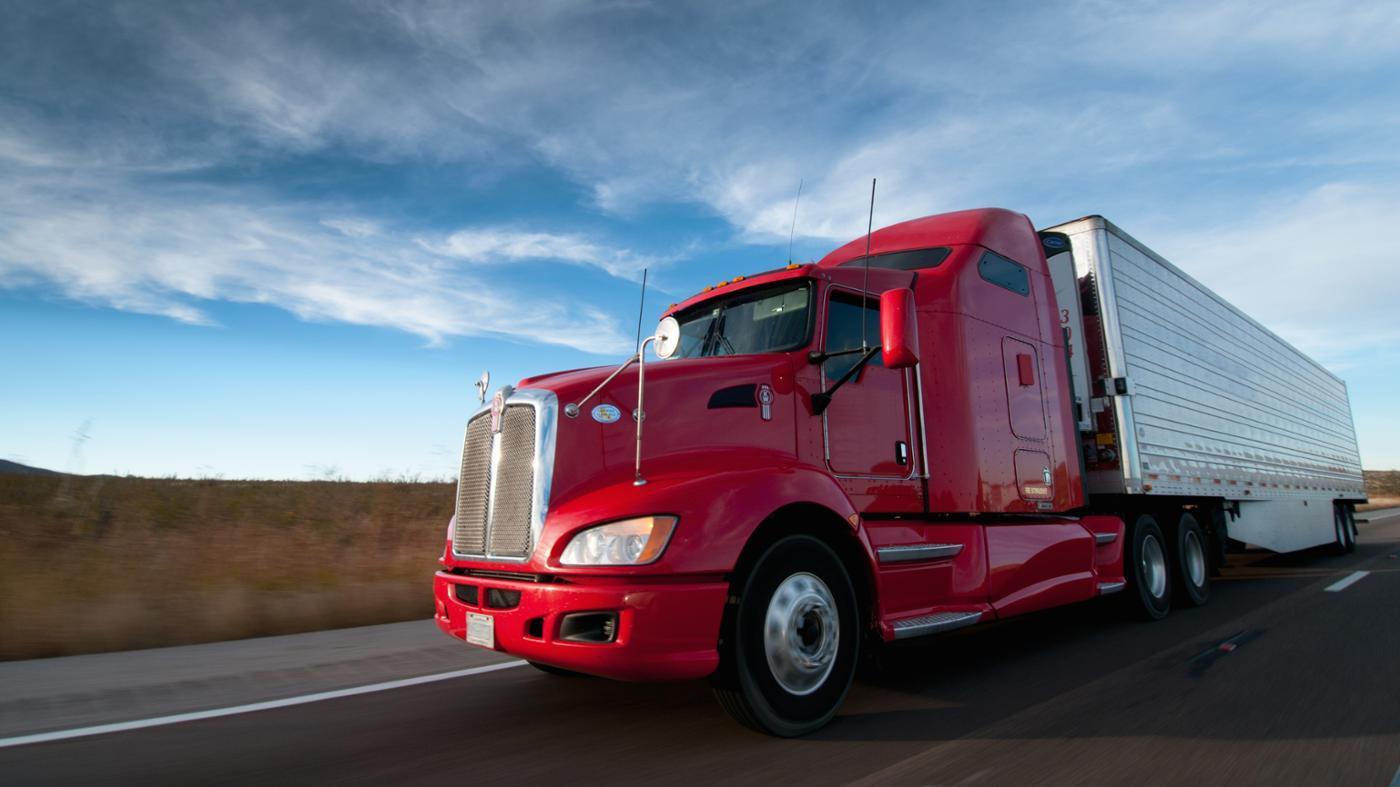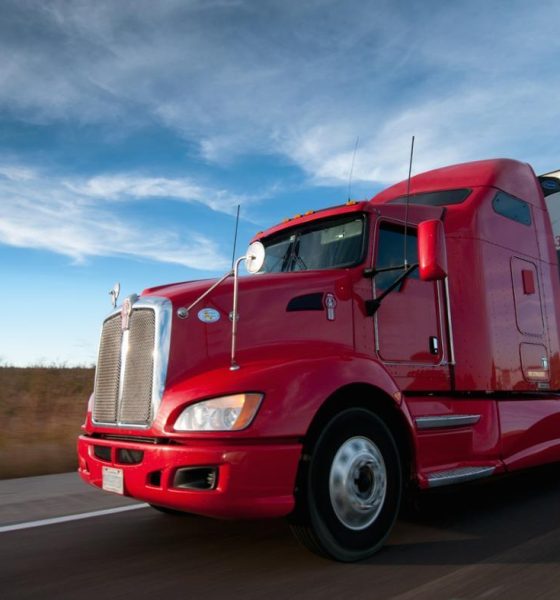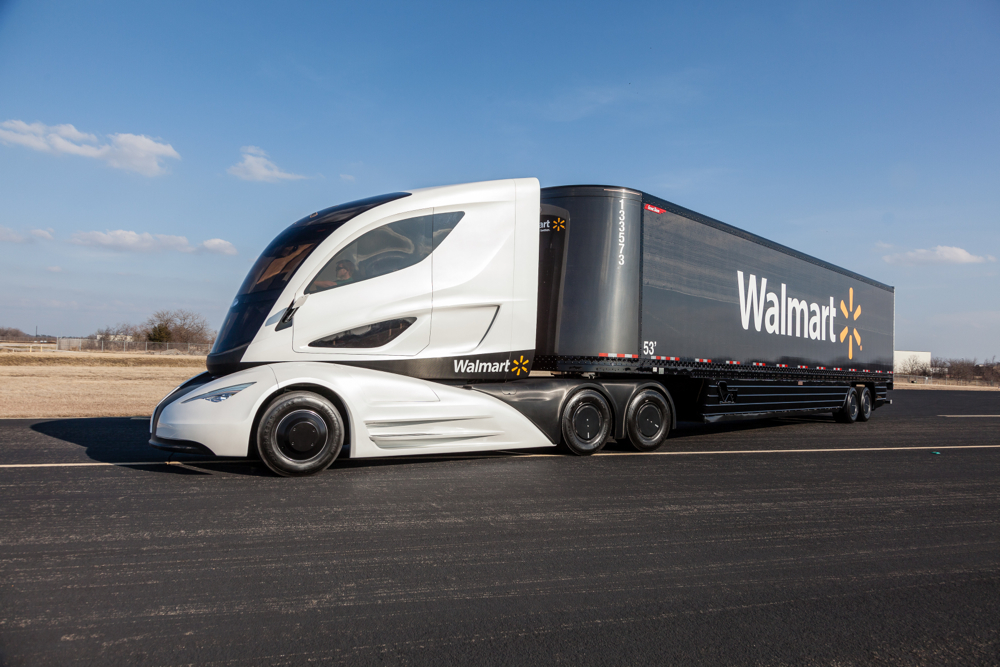

News
Solving the Tesla Semi truck conundrum: here’s what it might take
With the release of Tesla’s updated vision for the future, CEO Elon Musk included plenty of information that was both intriguing and light on details. From that, we will try to make a guess as to what Tesla’s plans are in reference to trucks and shed light on the many obstacles that the company will need to overcome before making its plans a reality.
The light details of Musk’s announcement is par for the course from Tesla and Co, which operates its marketing as much on hype and viral sharing as anything else. This is not a knock against the company, as most other firms would sacrifice virgins every Friday to see the same kind of unsolicited viral marketing that Tesla generates. One thing Elon has mastered is walking the fine line between being informative and forthcoming and being vague enough to cause rampant speculation.
In the company’s “Part Deux” plans for the future, a brief and almost passing mention of semi-trucks was made as a part of Tesla’s developments. Specifically, Must referred to “heavy-duty trucks” and called the idea a “Tesla Semi.” This can imply two things, but probably implies both. It could imply that Tesla plans to make a heavy-duty truck – which could mean a three-quarter ton pickup truck, a Class B heavy truck, or a large Class A freight-hauling truck. Or it can imply that Tesla plans to make a semi-truck only (aka “18 wheeler”). We believe it’s likely that they plan to do all of the above.
Currently, about 70 percent of the freight being moved around the United States is moved on semi-trucks in which a large tractor is attached to a separate trailer. These trucks typically operate at weights up to 80,000 pounds in vehicle, freight, and fuel. They are referred to as “Class A” trucks because the weight class requires an operator’s license of that type. Yet that is only one class of truck. And the typical over-the-road (OTR) truck we usually think of when talking about semi-trucks are just one slice of a large trucking pie.
Nearly 12,000 million tons of freight are hauled by trucks every year in the United States. A significant portion of that hauling is done by smaller trucks rather than large semi-trucks. Package carrying (van) trucks, dump trucks, refuse (garbage) trucks, and other specialized trucks are also common and actually make up a larger portion of the miles driven by heavy-duty trucking. Most of these vehicles have a gross weight of 26,000 pounds or more, by definition, so for our purposes here we will be excluding passenger-style heavy-duty pickups and the like. We are assuming that Musk is referring to freight hauling, given his statements.
With the plan to “cover the major forms of terrestrial transport” that Tesla put forth, we can assume that the company plans to design and potentially build heavy-duty trucks of all stripes. This is realistic given that major truck builders such as Paccar (Kenworth, Peterbilt), Volvo, Mack, etc. already do this. One basic design can be modified to match several needs, thus a single model Mack truck can be both an OTR freight puller and a dump truck with just a few changes to the drivetrain and chassis. Medium-duty trucks, such as package delivery (ala UPS, FedEx) box trucks can also be of a single design with multiple body options. Although the reality is a bit more complicated than this, the gist is that it is possible to design only a couple of vehicles and have them workable in most major truck markets. Knowing this, we will concentrate on the most difficult to achieve, over-the-road heavy-duty semi-trucks.
Knowing that, there are obstacles to overcome. The challenges of a Tesla pickup truck are a beginning, but with a heavy freight hauler, they become exponential. Here are some basic requirements for the biggest of these HD trucks:
- Power output similar to a large diesel engine, equalling roughly 450-550 horsepower and 800-1,200 pound-feet of torque. The amount of output depends heavily on the work to be done. A typical OTR truck, for example, falls in the lower end of this spectrum to maximize fuel efficiency while a typical off-road construction or heavy-load truck (logging and the like) will be at the higher end.
- An operating range of 600 miles per charge for OTR and about half that for more local use (construction, large trailer/freight delivery). Smaller trucks doing package deliveries could operate in the 150-mile range easily.
- The capability to haul as much or more freight than the current diesel-powered offerings do.
That last point is important. Getting a 600-mile range for a truck that can weigh up to 80,000 pounds, freight included, is pretty simple. Getting a 600-mile range for a truck and trailer weighing under 35,000 pounds is not as easy. It’s the old problem of more batteries equals more range, but also equals more weight.
There have been and are current attempts at electrifying semi-trucks, of course. Mostly in the medium-duty package delivery and trailer moving (non-transport) sectors. Solutions involving hydrogen fuel cells, battery-electrics, hydraulic hybrids, and more have been produced. Some did not do well (see Smith Transport) and some are going places (see Parker-Hannifin’s hydraulic hybrids). For the most part, battery-electric over-the-road trucks are seen as a pipe dream by most in the industry. There are good reasons for this. Not the least of which are the battery weight and range expectations of the trucks. Nevermind the likely long charging times required.
Without getting too detailed, most OTR drivers expect to put in 600 or more miles per day in a solo run (one driver) and about 1,000 or so when team driving. Most fuel stops are 15-20 minutes and most trucks have a range of 700-1,000 miles when fitted with dual tanks (one on either side). Having enough lithium-ion batteries on board to do that is daunting. Especially given the high power outputs required to move 80,000 pounds worth of rig and freight.
There are solutions for this, of course. Since Musk devoted so much of his announcement to autonomous driving, we can assume the plan is to include that with trucking. Three possible ideas are:
Relaying. A truck takes a trailer 300-400 miles, swaps it with a trailer going back where it came from, and returns. The trailer swapped continues on with on another truck for another 300-400 miles, then another, and another.. Until its final destination and delivery. This is currently done with certain types of freight and these trucks often have shorter trailers and run them as doubles (one attached to another). Automating this might be a solution. At least for some types of freight.
Battery swapping. The truck drives for a certain range of miles, stops somewhere to have its emptied battery swapped with a full one, and continues. If done in 10-15 minutes and not more than twice a day, this would be realistic under the current trucking paradigm with a driver on board. When automated, the swaps could be as often as you’d like, though each stop means delays in shipment.
Partial electrification. This would be a truck which runs on electricity but has an on-board combustion generator. This is a potential solution, but is not likely to be on Tesla’s agenda.
Another option that should be considered, though it might not be what Tesla fans will want to hear: Musk may be planning on taking a standard semi-truck and automating it. In other words, the Tesla Semi could actually be an automation system, not an actual truck. At least in the beginning. Given the huge amount of technical obstacles, some of which may not be surmountable without combustion, this is a viable guess. At least for OTR trucks.
Any of these ideas or a combination are realistic for a Tesla Semi strategy in regards to OTR trucks. There are no shortage of plans (grandiose and otherwise) for transforming the trucking industry via electrification. Seeing Teslas will at least be interesting.

News
Tesla aims to combat common Full Self-Driving problem with new patent
Tesla writes in the patent that its autonomous and semi-autonomous vehicles are heavily reliant on camera systems to navigate and interact with their environment.

Tesla is aiming to combat a common Full Self-Driving problem with a new patent.
One issue with Tesla’s vision-based approach is that sunlight glare can become a troublesome element of everyday travel. Full Self-Driving is certainly an amazing technology, but there are still things Tesla is aiming to figure out with its development.
Unfortunately, it is extremely difficult to get around this issue, and even humans need ways to combat it when they’re driving, as we commonly use sunglasses or sun visors to give us better visibility.
Cameras obviously do not have these ways to fight sunglare, but a new patent Tesla recently had published aims to fight this through a “glare shield.”
Tesla writes in the patent that its autonomous and semi-autonomous vehicles are heavily reliant on camera systems to navigate and interact with their environment.

The ability to see surroundings is crucial for accurate performance, and glare is one element of interference that has yet to be confronted.
Tesla described the patent, which will utilize “a textured surface composed of an array of micro-cones, or cone-shaped formations, which serve to scatter incident light in various directions, thereby reducing glare and improving camera vision.”

The patent was first spotted by Not a Tesla App.
The design of the micro-cones is the first element of the puzzle to fight the excess glare. The patent says they are “optimized in size, angle, and orientation to minimize Total Hemispherical Reflectance (THR) and reflection penalty, enhancing the camera’s ability to accurately interpret visual data.”
Additionally, there is an electromechanical system for dynamic orientation adjustment, which will allow the micro-cones to move based on the angle of external light sources.
This is not the only thing Tesla is mulling to resolve issues with sunlight glare, as it has also worked on two other ways to combat the problem. One thing the company has discussed is a direct photon count.
CEO Elon Musk said during the Q2 Earnings Call:
“We use an approach which is direct photon count. When you see a processed image, so the image that goes from the sort of photon counter — the silicon photon counter — that then goes through a digital signal processor or image signal processor, that’s normally what happens. And then the image that you see looks all washed out, because if you point the camera at the sun, the post-processing of the photon counting washes things out.”
Future Hardware iterations, like Hardware 5 and Hardware 6, could also integrate better solutions for the sunglare issue, such as neutral density filters or heated lenses, aiming to solve glare more effectively.
Elon Musk
Delaware Supreme Court reinstates Elon Musk’s 2018 Tesla CEO pay package
The unanimous decision criticized the prior total rescission as “improper and inequitable,” arguing that it left Musk uncompensated for six years of transformative leadership at Tesla.

The Delaware Supreme Court has overturned a lower court ruling, reinstating Elon Musk’s 2018 compensation package originally valued at $56 billion but now worth approximately $139 billion due to Tesla’s soaring stock price.
The unanimous decision criticized the prior total rescission as “improper and inequitable,” arguing that it left Musk uncompensated for six years of transformative leadership at Tesla. Musk quickly celebrated the outcome on X, stating that he felt “vindicated.” He also shared his gratitude to TSLA shareholders.
Delaware Supreme Court makes a decision
In a 49-page ruling Friday, the Delaware Supreme Court reversed Chancellor Kathaleen McCormick’s 2024 decision that voided the 2018 package over alleged board conflicts and inadequate shareholder disclosures. The high court acknowledged varying views on liability but agreed rescission was excessive, stating it “leaves Musk uncompensated for his time and efforts over a period of six years.”
The 2018 plan granted Musk options on about 304 million shares upon hitting aggressive milestones, all of which were achieved ahead of time. Shareholders overwhelmingly approved it initially in 2018 and ratified it once again in 2024 after the Delaware lower court struck it down. The case against Musk’s 2018 pay package was filed by plaintiff Richard Tornetta, who held just nine shares when the compensation plan was approved.
A hard-fought victory
As noted in a Reuters report, Tesla’s win avoids a potential $26 billion earnings hit from replacing the award at current prices. Tesla, now Texas-incorporated, had hedged with interim plans, including a November 2025 shareholder-approved package potentially worth $878 billion tied to Robotaxi and Optimus goals and other extremely aggressive operational milestones.
The saga surrounding Elon Musk’s 2018 pay package ultimately damaged Delaware’s corporate appeal, prompting a number of high-profile firms, such as Dropbox, Roblox, Trade Desk, and Coinbase, to follow Tesla’s exodus out of the state. What added more fuel to the issue was the fact that Tornetta’s legal team, following the lower court’s 2024 decision, demanded a fee request of more than $5.1 billion worth of TSLA stock, which was equal to an hourly rate of over $200,000.
Delaware Supreme Court Elon Musk 2018 Pay Package by Simon Alvarez
News
Tesla Cybercab tests are going on overdrive with production-ready units
Tesla is ramping its real-world tests of the Cybercab, with multiple sightings of the vehicle being reported across social media this week.

Tesla is ramping its real-world tests of the Cybercab, with multiple sightings of the autonomous two-seater being reported across social media this week. Based on videos of the vehicle that have been shared online, it appears that Cybercab tests are underway across multiple states.
Recent Cybercab sightings
Reports of Cybercab tests have ramped this week, with a vehicle that looked like a production-ready prototype being spotted at Apple’s Visitor Center in California. The vehicle in this sighting was interesting as it was equipped with a steering wheel. The vehicle also featured some changes to the design of its brake lights.
The Cybercab was also filmed testing at the Fremont factory’s test track, which also seemed to involve a vehicle that looked production-ready. This also seemed to be the case for a Cybercab that was spotted in Austin, Texas, which happened to be undergoing real-world tests. Overall, these sightings suggest that Cybercab testing is fully underway, and the vehicle is really moving towards production.
Production design all but finalized?
Recently, a near-production-ready Cybercab was showcased at Tesla’s Santana Row showroom in San Jose. The vehicle was equipped with frameless windows, dual windshield wipers, powered butterfly door struts, an extended front splitter, an updated lightbar, new wheel covers, and a license plate bracket. Interior updates include redesigned dash/door panels, refined seats with center cupholders, updated carpet, and what appeared to be improved legroom.
There seems to be a pretty good chance that the Cybercab’s design has been all but finalized, at least considering Elon Musk’s comments at the 2025 Annual Shareholder Meeting. During the event, Musk confirmed that the vehicle will enter production around April 2026, and its production targets will be quite ambitious.









